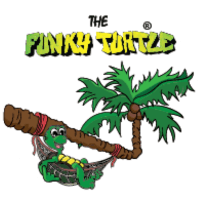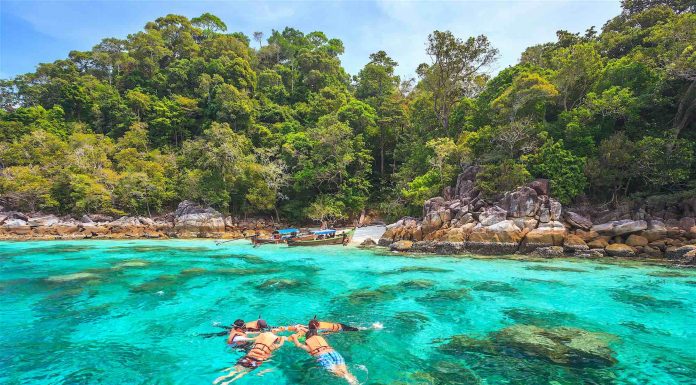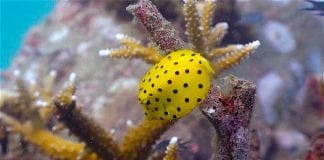Giant Clam Facts and Koh Tao
When you think of marine animals you probably think of more charismatic animals like sharks or turtles, but lets consider the giant clam (Tridacna gigas).
What are Giant Clams?
Giant clams are a group of marine molluscs with twelve known species living in shallow, tropical waters. Giant clams are related to other shellfish like oysters, clams and mussels.
They are easy to recognise as they have two shells that are hinged together. The clam can open and close their shells by contracting or relaxing a single large adductor muscle.
Most people believe that giant clams are immobile but juvenile clams are able to “walk” across the seafloor. They probably do this to get away from predators or to find mates.
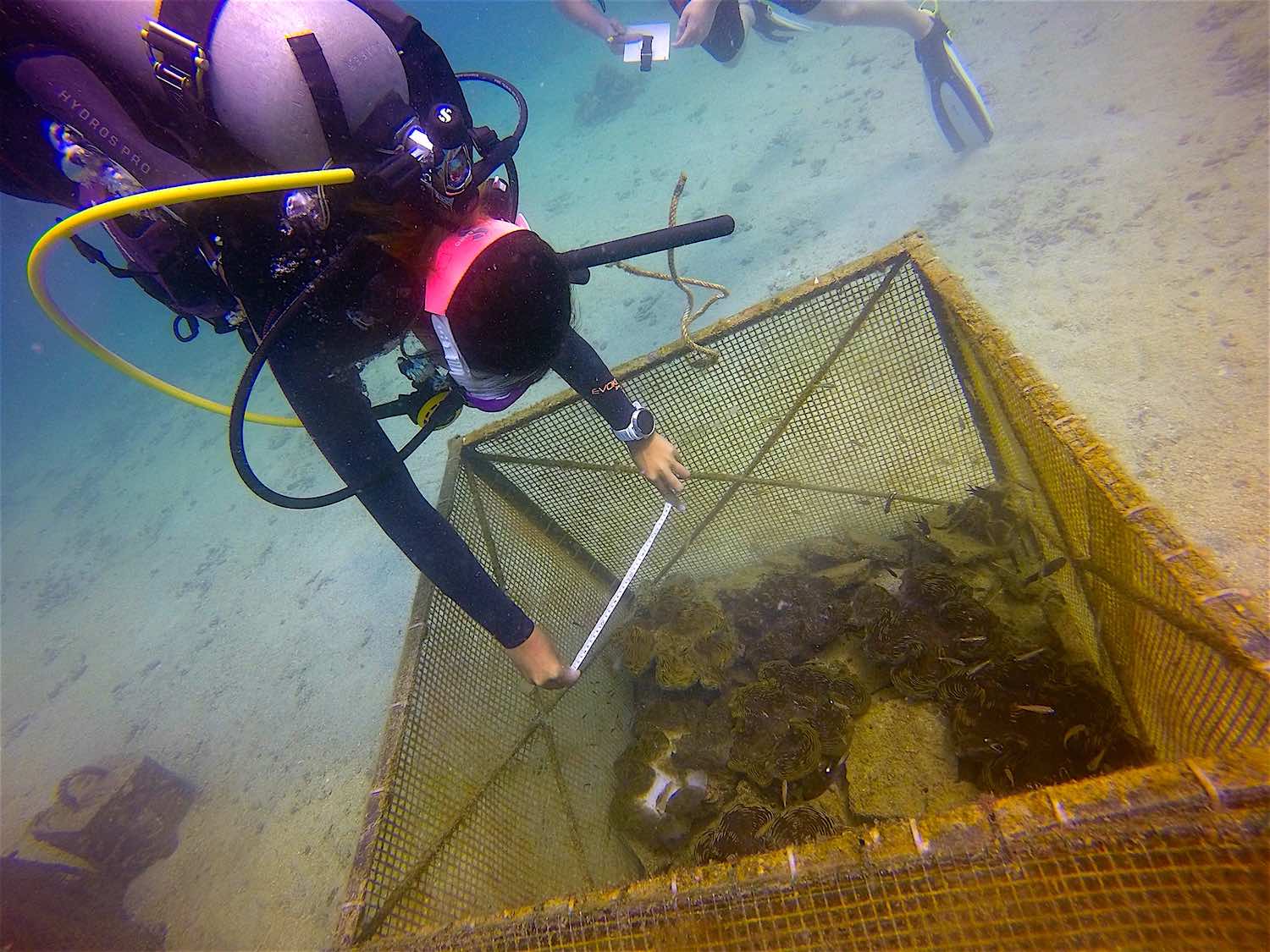
How big are Giant Clams?
The largest giant clam was measured as 4.5 feet long and weighed 550 pounds, the same as three baby elephants! The giant clam is the largest bivalve in the world and can live up to a 100 years old.
The giant clam has a large mantle which is brilliantly coloured, where they host millions of symbiotic algae, called zooxanthellae. The zooxanthellae provide clams with energy that they produce by photosynthesising.
This relationship gives the algae a safe place to live, and they receive nutrients to photosynthesise from the clams.
The clams get their beautiful colours from the symbiotic algae but this relationship also adds to the vulnerability of the clams, as it needs to be in clear, shallow water. This makes them especially vulnerable to poaching.
These giant filter feeders can filter hundreds of gallons of water per day and serve as a water filtration system. According to researchers at Stanford University, the bivalves’ tissue absorb some of the chemicals and pathogens commonly found in water.
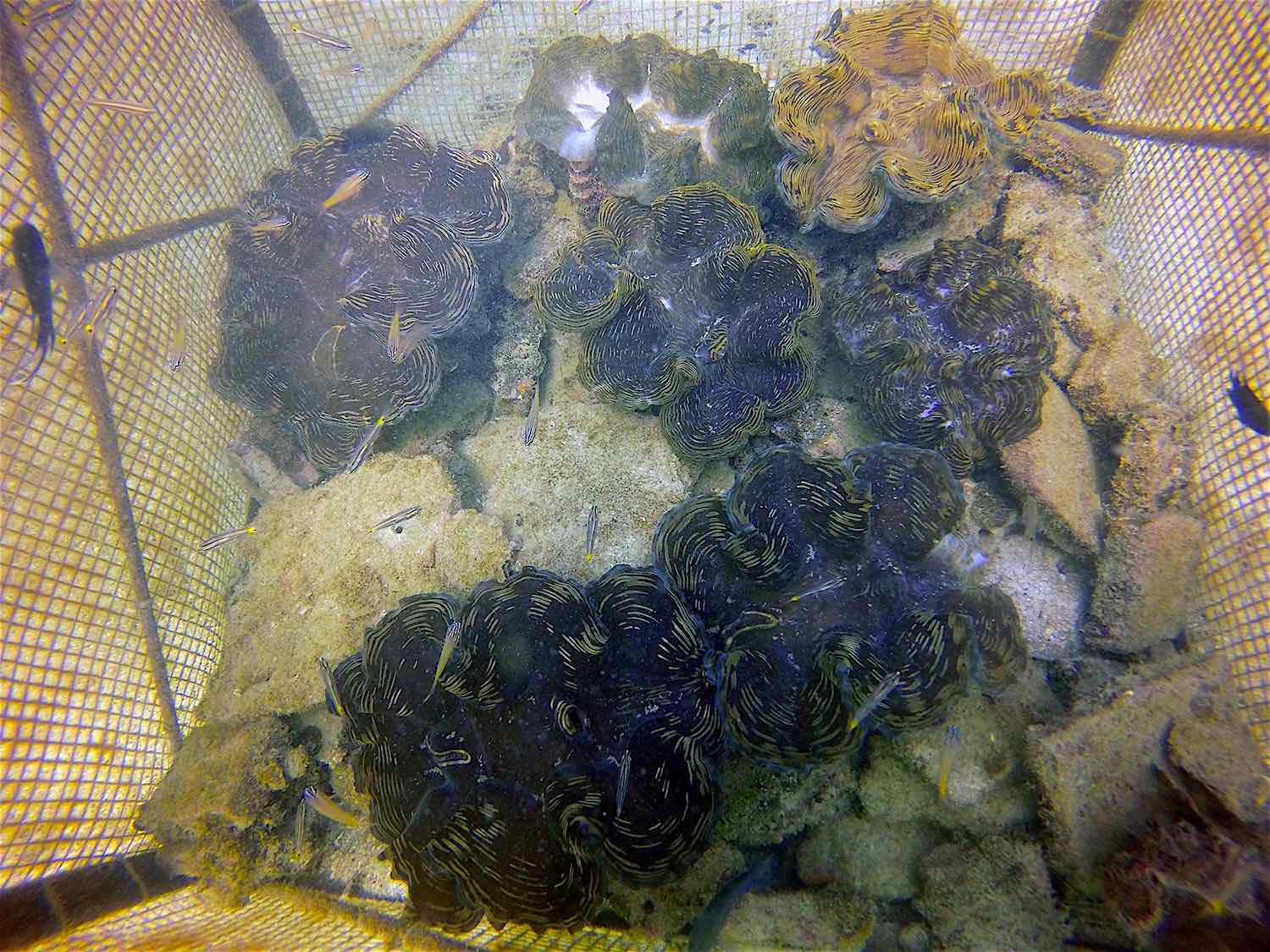
Giant clams and Human Threat
It is believed that 50 percent of wild populations of giant clams are severely depleted. Humans are the greatest threat to clam populations around the world. They are facing threats from coral reef degradation, destruction, pollution and ocean acidification.
Clams are poached for the legal and illegal aquarium trade, used as aphrodisiacs in Chinese medicine and eaten as a delicacy in Asia.
They are also popular in Buddhist countries where giant clams are one of Buddhisms seven treasures. The large clam shells are used in expensive and intricate carvings, ornaments or beads.
Clams are highly vulnerable in the wild because of their late sexual maturity and immobile adult stage. Nine giant clam species are protected under Appendix II of the Convention on International Trade in Endangered Species (CITES) meaning that they are vulnerable to extinction.
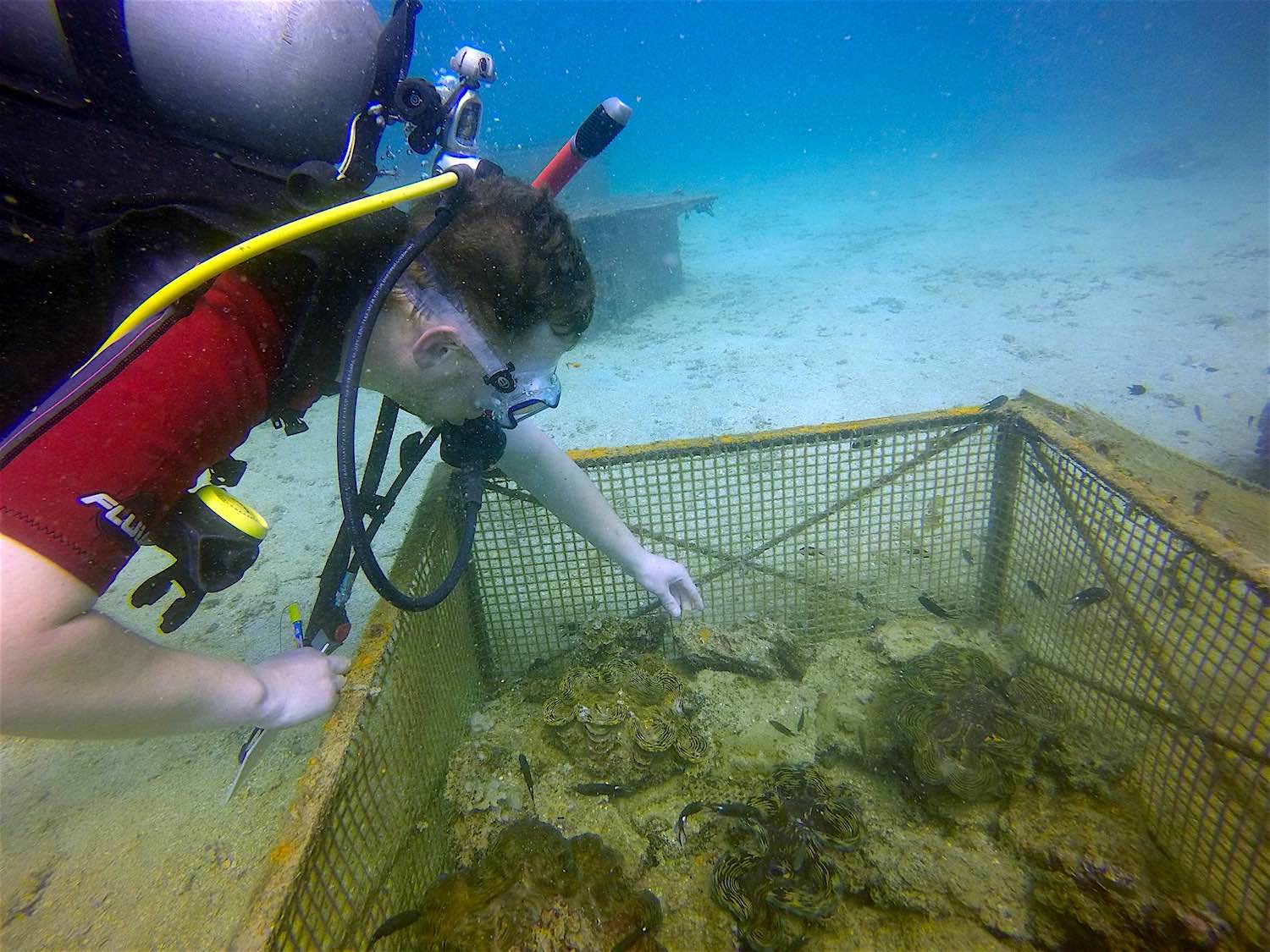
Why we should care about Giant Clams
Giant Clams are an important part of an efficient and highly functioning coral reef. Their presence is an early indicator of reef health.
Clams contribute to the overall productivity by filtering water and removing toxins as well as providing a safe haven for shrimps, crabs and small fish in and around their huge shells.
Clam meat also provides nutrient dense food for scavengers and predators, their gametes in the water column feeds opportunistic feeders and their large production of calcium carbonate will eventually make its way into the framework of the reef.
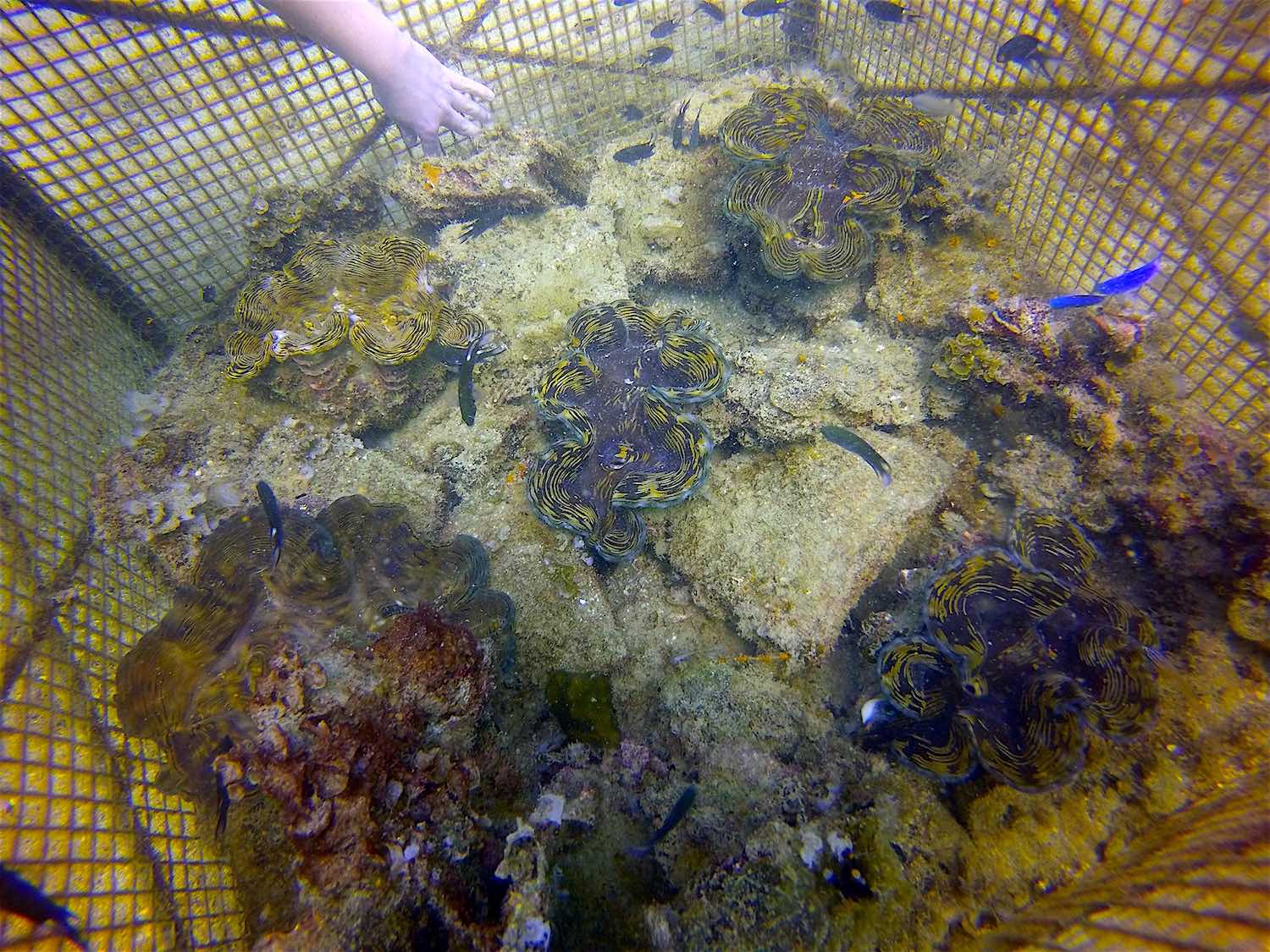
Giant Clams around Koh Tao
How clam nurseries work
Clams are kept in a nursery setting for approximately one year. They are often quite stressed when they are first relocated, letting them grow a bit stronger in nurseries allows them a much better chance of survival once transplanted to the reefs around Koh Tao.
Having the clams in a controlled environment allows researchers to collect weekly data on their growth, their reactions to changing water conditions and to remove algae from the clam nurseries.
After about a year the clams are relocated, their positions noted so they can be checked on and monitored for health. This ensures long term survival rates and thriving population of clams around Koh Tao.
Get Involved with Giant Clams
Eco Koh Tao do weekly giant clam measuring and algae removal dives. Sign up and be a part of the solution to save these Giant clams.
When on holidays do not purchase jewellery or decorations that use shells. Do not remove shells when beach combing and do not purchase shells to take back home with you
Frequently Asked Questions
Why are giant clams endangered?
Giant clams are vulnerable and endangered due to their late sexual maturity and the fact they are immobile. They are of significant ecological importance to coral reefs but are facing numerous threats from coral reef degradation and destruction, harvesting for food by local communities, as well as being sold for ornamental value or to the illegal aquarium trade. Nine species of Giant clams are now on the CITES appendix 2 endangered list.
Do giant clams have eyes?
Giant clams have several hundred small pinhole-type eyes on the exposed mantle. These eyes respond to movements and dark objects or shadows and then retreat back into their shell.
How fast does a giant clam grow?
Giant clams grow fast and have been observed to grow at a rate of around 3mm a week, which is over 12 centimetres in a year.
Are giant clams dangerous?
No, Giant Clams are not dangerous. When they feel threatened they close their shells but very slowly so they are harmless to a human.
How do giant clams protect themselves?
Giant clams close in response to nearby movement and for protection, however, they don’t snap shut as they need to expel large volumes of water to close.
